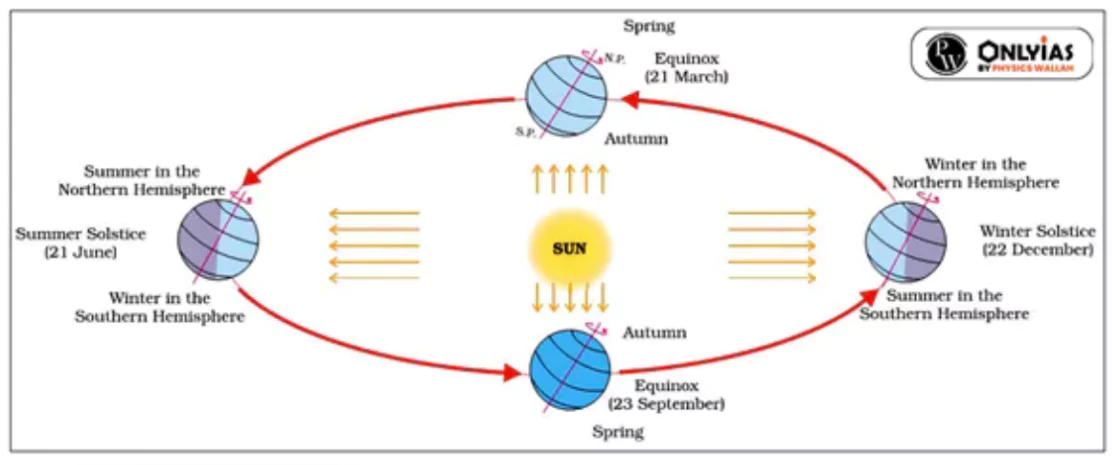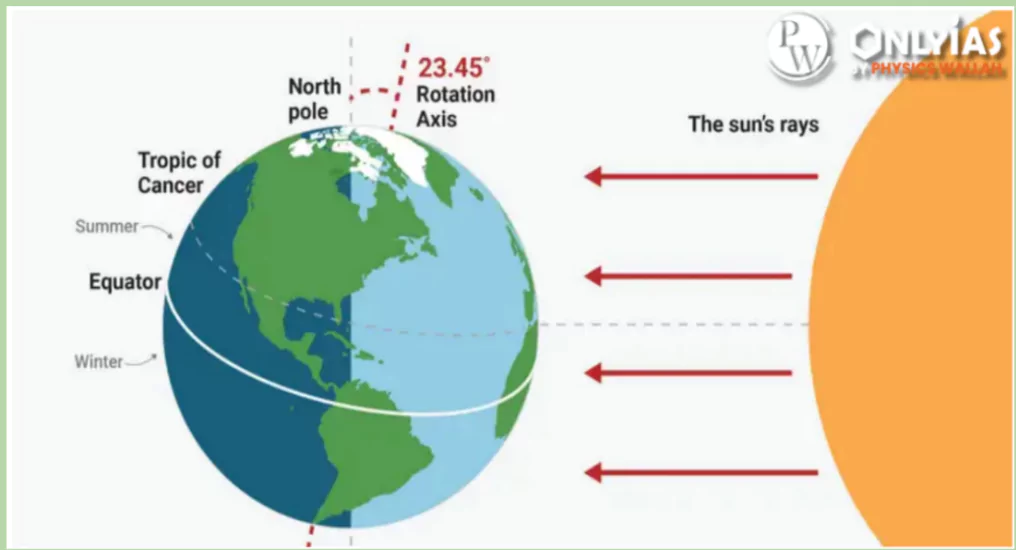21st June is the longest day in the Northern Hemisphere, technically this day is referred to as Summer solstice. The Earth receives a greater amount of energy from the Sun on this day.
Solstice
- Solstice means “sun stands still” in Latin.
- During the solstice, the Earth’s axis — around which the planet spins, completing one turn each day — is tilted in a way that the North Pole is tipped towards the Sun and the South Pole is away from it.
|
More Summer Solstice, 21st June
- The day is referred to as the summer solstice, and it occurs when the Sun is directly over the Tropic of Cancer, or more specifically right over 23.5 degrees north latitude.
- According to NASA, the amount of incoming energy the Earth received from the Sun on this day is 30 percent higher at the North Pole than at the Equator.
Enroll now for UPSC Online Course
Equinoxes
- Occur around March 20th and September 22nd when day and night are approximately equal in length worldwide.
- Earth’s axis is not pointed toward our Sun, but is perpendicular to the incoming rays.
- The vernal or spring equinox occurs in the northern hemisphere on March 20 or 21. September 22 or 23 marks the northern hemisphere autumnal or fall equinox.
|
About Summer Solstice
- Summer Solstice in the Northern Hemisphere
- It marks the longest day of the year, occurring around 20th or 21st June.
- Most extended period of daylight and the shortest night.
- Sun is directly overhead at the Tropic of Cancer (23.5°N latitude).
- Midnight Sun: In places within the Arctic Circle, the sun may not set at all, resulting in the phenomenon known as the Midnight Sun.
- Summer Solstice in the Southern Hemisphere
- Typically occurs around December 21st or 22nd each year.
- The South Pole is tilted closest to the sun.
- Sun reaches its highest point in the sky at noon, appearing directly overhead at the Tropic of Capricorn (latitude 23.5° South)

Length Of Day – Uneven Heating Of Earth’s Surface
- The tilt of the Earth in combination with the latitude of location affects the length of the day.
- Those living on the equator have 12 hours of daylight and 12 hours of darkness every day of the year.
- At the North Pole, one would have 6 months of constant daylight from spring to fall.
- One would encounter 24 hours of night for six months from fall to spring.
- Varying amounts of heat: With more time to absorb energy from the Sun, the Earth retains varying amounts of heat.
- This uneven heating of the Earth’s surface has an effect on the seasons.
- Long Day = Warmer
- Equal Day = Moderate
- Short Day = Colder

|
Check Out UPSC CSE Books From PW Store
Difference Between Summer And Winter Solstice In Northern Hemisphere
| Aspect |
Summer Solstice |
Winter Solstice |
| Date |
Around 21st June (Northern Hemisphere) |
Around 21st December (Northern Hemisphere) |
| Earth’s Tilt |
North Pole tilted closest to the Sun |
North Pole tilted furthest from the Sun |
| Day Length |
Longest day of the year |
Shortest day of the year |
| Night Length |
Shortest night of the year |
Longest night of the year |
| Sun’s Position |
Highest point in the sky at noon |
Lowest point in the sky at noon |
| Northern Hemisphere Weather |
Summer in Northern Hemisphere |
Winter in Northern Hemisphere |
| Southern Hemisphere Weather |
Winter in Southern Hemisphere |
Summer in Southern Hemisphere |
| Sun’s Path |
Longest arc across the sky |
Shortest arc across the sky |
![]() 24 Jun 2024
24 Jun 2024

